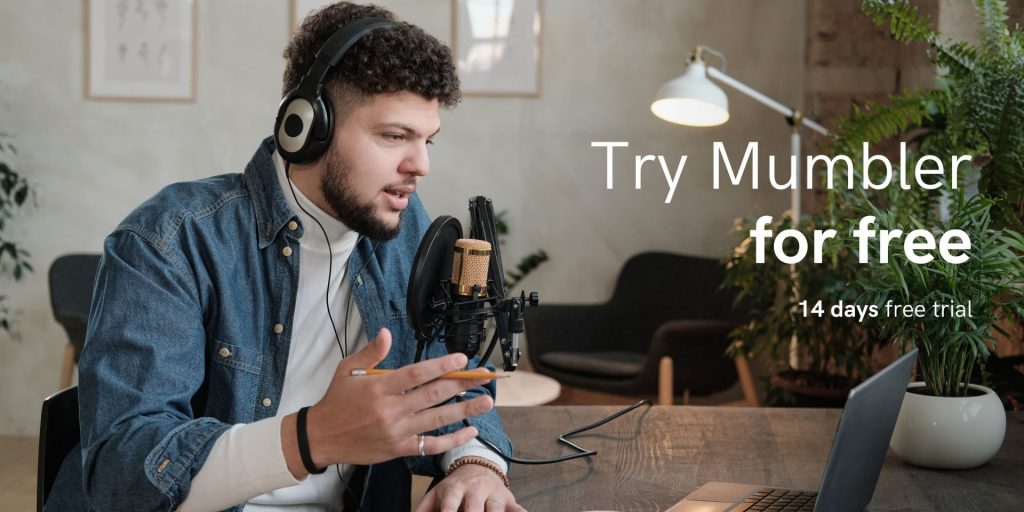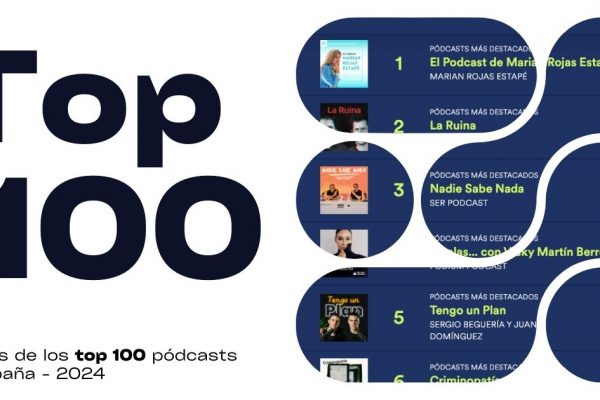If you create content and have a contact base, defining the sending frequency of your newsletter is crucial to connect with your audience.
Communication is essential to staying connected with the audience, and newsletters have resurged as a powerful tool for content creators.
These email informational pieces allow creators to establish a closer and more direct relationship with their followers, delivering relevant and valuable content directly to the contacts' inboxes.
The sending frequency is one of the crucial elements to consider when launching a newsletter. However, before addressing the question of how often a newsletter should be sent, it is essential to understand the purpose behind this tool.
Newsletters go beyond simple updates; they represent an opportunity to share stories, tips, analyses, and experiences in a personal and exclusive format.
Creators must carefully weigh how the sending frequency relates to their ability to consistently generate quality content.
While it is tempting to send emails frequently to keep contacts' attention, it is equally important not to compromise the content's quality due to the urgency of filling their inbox.
As we delve into the discussion about the sending frequency, it is crucial to remember that the key to a successful newsletter lies in balance.
Finding the right balance between sending frequency and delivering valuable content is essential to avoid audience exhaustion and the risk of emails being marked as spam.
In summary, newsletters are a powerful tool for creators who want to build and maintain an engaged audience..
The sending frequency plays a crucial role in the success of a newsletter but should not overshadow the importance of providing quality content.
In the following points, we will explore how to determine the ideal frequency and how to balance it with excellence in the content offered to contacts.
Optimal frequency: What's the magic number?
The question of the perfect sending frequency in a newsletter is a common puzzle among creators.
However, it is essential to understand that there is no universal "magic number" that works for everyone.
The answer to this question lies in a combination of factors, including the type of content you produce, the audience you target, and your own goals as a creator.
The sending frequency should be strategically considered.
Sending too many emails in a short period can lead contacts to feel overwhelmed, potentially resulting in unsubscribes or having emails marked as spam.
On the other hand, sending emails too infrequently could cause your audience to forget about you or lose interest in what you have to offer.
To determine the ideal sending frequency, it's crucial to know your audience.
You can conduct surveys, collect data, and analyze the open and click-through behavior in your previous newsletters.
These indicators will give you an idea of how your audience responds to different levels of sending frequency. Additionally, consider the type of content you provide.
Some creators may find benefits in sending daily emails with small doses of information, while others may choose to send weekly or bi-weekly newsletters with more elaborate content.
Flexibility is key when it comes to sending frequency.
Keep the door open to adjust your approach based on results and feedback from your contacts.
Remember that consistency is crucial. If you decide to send newsletters weekly, for example, make sure to stick to that promise to build trust and meet your audience's expectations.
In summary, there is no magic number when it comes to the sending frequency in newsletters.
It's a delicate balance that should be based on understanding your audience and goals. Experiment, analyze results, and adapt your approach based on what works best for your project and your audience.
But never lose sight that the quality of content should be the foundation of your newsletter strategy.

Quality over quantity: Content is king.
In the world of newsletters, the premise "content is king" becomes even more relevant.
While the sending frequency is important to maintain a constant presence in the minds of your contacts, the quality of the content you deliver is what truly fosters audience engagement and loyalty.
It's tempting to fall into the trap of sending newsletters with a high sending frequency and less elaborate content.
However, this approach can be counterproductive. Subscribers value the time they spend reading your content, so each interaction should provide genuine value.
Instead of focusing solely on the quantity of newsletters you send, emphasize the creation of exceptional content.
Research thoroughly, present original ideas, and offer unique perspectives in your field.
Quality content is shared, discussed, and saved for future reference. This positive interaction with your newsletters builds a foundation of engaged contacts eagerly anticipating your emails.
It's important to remember that newsletters should not be purely promotional.
Provide value to your contacts by delivering practical tips, in-depth analyses, compelling stories, and exclusive resources.
Each newsletter should be an experience in itself, enriching the lives of your contacts in some way.
In summary, the quality of content should be the foundation of your newsletter strategy.
Instead of solely focusing on the sending frequency, invest time and effort in creating content that resonates with your audience.
Remember that a single exceptional email can have a much greater impact than several low-quality ones, and understand how your audience's preferences can guide your sending frequency strategy.
Understanding Your Audience: What Do Your Contacts Prefer?
In the world of newsletters, understanding the preferences and needs of your audience is key to building an effective strategy.
Every audience is unique, and what resonates with one may not be the same as what captivates another. To determine when and what content to send, you must dive into the minds of your subscribers.
Market research and data collection are powerful tools.
Conduct periodic surveys to gather direct information from your subscribers about their interests, expectations, and content preferences.
This can shed light on how often they want to receive your newsletters and the type of content they find most valuable.
Analyzing the metrics of your previous newsletters can also provide valuable insights.
See which topics generate more interaction, which have higher open rates, and which lead to conversions or desired actions.
These indicators can reveal patterns and trends that will help you adjust your strategy.
Segmenting your subscriber list is another effective technique.
Divide your subscribers into groups based on their interests, level of engagement, or location.
This will allow you to send highly relevant content to each group and adjust the sending frequency according to the preferences of each segment.
Two-way communication is also essential. Encourage your subscribers to provide open feedback about your newsletters. Listen carefully and adapt your approach based on their comments.
In summary, understanding your audience is crucial to determine your newsletter strategy.
Without focusing directly on the sending frequency, research, analyze, and listen to identify what your subscribers value and how they want to interact with you, analyzing your metrics.
Measuring auccess: Analyzing metrics
In the world of newsletters, measuring success goes beyond the simple quantity of emails sent.
Analyzing key metrics provides a deep insight into how your efforts are resonating with your audience and allows you to adjust your strategy for optimal results.
The metrics you measure will depend on your specific goals.
Open and click-through rates are fundamental metrics for understanding your subscribers' level of interaction with your emails.
A high open rate indicates that your subject lines are appealing, while a high click-through rate indicates that the content inside the email is generating interest.
Conversion rate analysis is another key indicator. Are your subscribers taking the actions you desire after reading your newsletters?
This can range from making a purchase to signing up for an event.
If the conversion rate is low, you may need to adjust the content, design, or call to action.
Tracking unsubscribe rates is also important.
If you notice a sudden increase in unsubscribes, it could be a signal that something in your strategy isn't working.
You might be sending emails too frequently, the content may not be meeting expectations, or subscribers may have simply lost interest.
Another valuable metric is the bounce rate.
A high percentage may indicate that your emails are being marked as spam or that the email addresses on your list are not valid.
It's essential to note that these metrics should be evaluated over time to detect trends and patterns.
Don't be swayed by a single metric. You should look at the big picture.
In summary, metric analysis is essential to measure the success of your newsletter strategy.
By examining open rates, clicks, conversions, and other relevant indicators, you'll gain valuable insights into how your audience is interacting with your emails.
This will allow you to adjust your approach, continuously improve your results, and adapt your newsletter strategy.

Adapting to change: Adjusting frequency according to needs
Adaptability is essential for long-term success.
As audience preferences evolve and circumstances change, it's crucial to adjust your approach, including the sending frequency, to ensure you continue to provide consistent value.
Your audience's needs may change over time.
What worked in the past may not be equally effective in the future.
Maintain an open line of communication with your subscribers to understand their changes in interests and preferences. As you gather feedback and analyze metrics, you'll be in a better position to adjust the sending frequency based on what works best at the current moment.
External circumstances can also influence your newsletter strategy.
Current events, industry changes, or even global factors may require a review of the sending frequency.
Keep a finger on the pulse of what's happening in your field and consider how those factors may influence what your subscribers want or need.
Remember that adaptability doesn't mean constantly changing your strategy.
It's important to find a balance between consistency and flexibility. If you decide to adjust the sending frequency, communicate it to your subscribers and explain why you're making the change.
Transparency will build trust and understanding.
In summary, adaptability is crucial in a successful newsletter strategy.
Adjusting the sending frequency according to the changing needs of your audience and external circumstances will allow you to maintain a strong and relevant connection with your subscribers.
By being willing to evolve, you'll be in the best position to make the most of this powerful communication tool.
So, how do you know what the ideal sending frequency is?
It's clear that defining the ideal sending frequency for your newsletter is not straightforward.
However, we've explored various aspects related to this question.
From understanding the importance of providing valuable content to adapting to changing needs, each element plays a vital role in creating a successful strategy.
Remember that there's no one-size-fits-all answer to the question of the ideal sending frequency.
It depends on a variety of factors, including the type of content you produce, your audience's preferences, and your own goals as a creator.
The key is to find the right balance and be willing to adjust your approach as needed.
With these insights in mind, you're better prepared to build a newsletter strategy that not only keeps your subscribers engaged but also allows you to achieve your goals by creating content..
Remember that success lies in the combination of content quality, audience understanding, and continuous adaptability.
And you? Have you already launched your newsletter, or are you still thinking about it?
What do you think is the ideal sending frequency for your newsletter?
About the author
Content Manager at Mumbler.
Podcaster and content creator.
Passionate about communication and a fan of the WordPress community.
I talk about movies and series on Babel Infinito.
I talk about podcasting on Todo por Un Podcast.









One Response